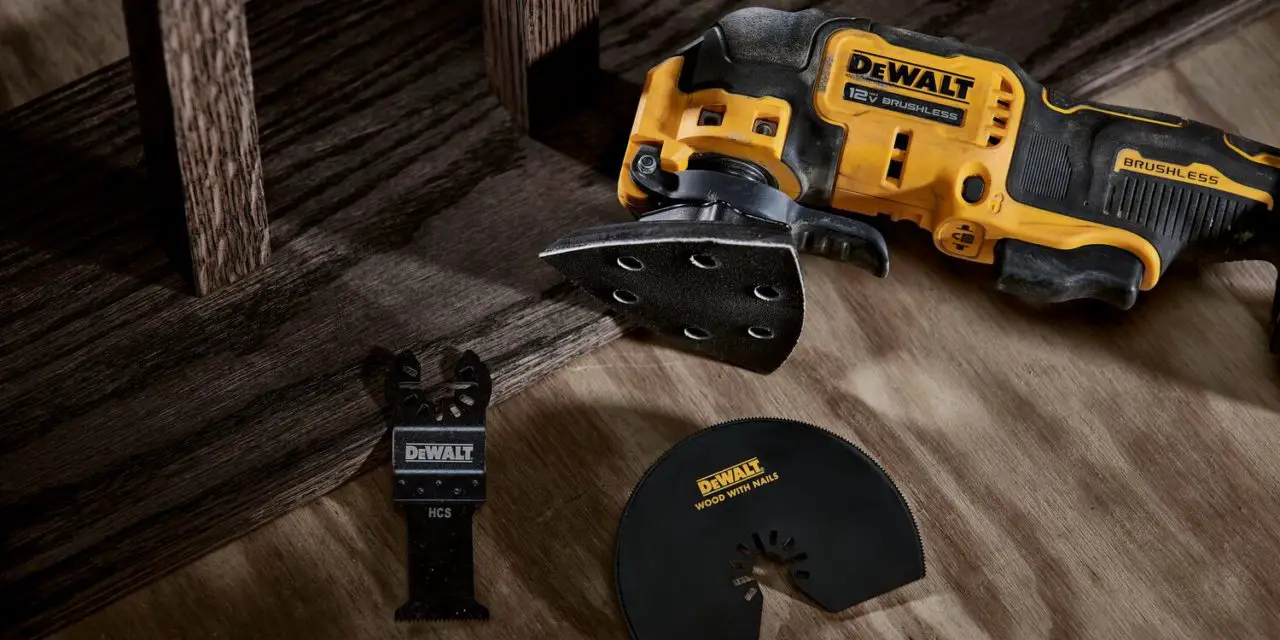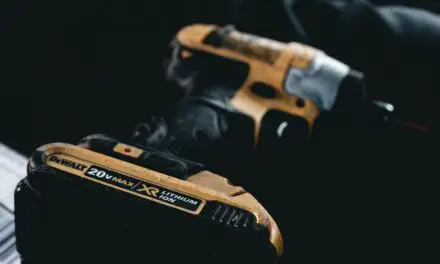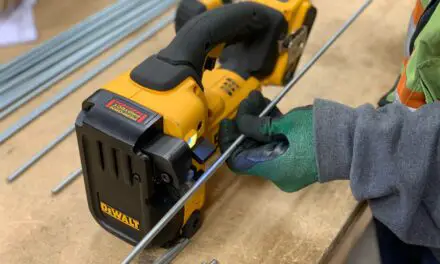The DeWalt oscillating multi-tool is a workhorse for any construction site or do-it-yourself project, so can it fit any other blades?
- Cutting Blades
- Sawing Blades
- Plunge-cutting Blades
- Grout Removal Blades
- Drywall Cutting Blades
- Sanding Attachments
- Scraping Attachments
- Rasping Blades
- Polishing Attachments
There are numerous blades for every imaginable project available for your USA-Made DeWalt oscillating tools. They can make quick work of many different types of material.
What Blades Fit DeWalt Oscillating Tool?
The universal nature of the DeWalt oscillating tool blade connector makes it so there are so many blades available for the tool.
Here are some different blades and attachments for any job with a DeWalt Oscillating tool:
- Carbide blades
- Fine tooth blades
- Plunge cutting blades
- Segment saw blades
- Scraper blades
- Sanding attachments and sanding pads
- Drywall blades
- Outlet Box cutters
These are just the most common attachments and saw types for the DeWalt oscillating tool, but many more could be available each day. People find many uses for the DeWalt oscillating tool.
Different Types of Blades and Their Uses
There are many blades available for the DeWalt Oscillating tool, whether you are using a chargeable cordless or corded model.
They can take on any job thrown at them.
Another benefit is the symmetrical design makes them good for both left and right-handed people.
A feature not many tools take into consideration.
Carbide Blades
Carbide Blades are some of the most durable blades available for the DeWalt oscillating tool.
They can cut through brick, grout, concrete, and other hard materials.
They aren’t only for hard materials, though, because you can get some with finer teeth that are meant for woodworking.
Fine-Tooth Blades
There are four main sizes of fine-tooth saw blades for the DeWalt oscillating tool.
These are 3/8″, 3/4″, 1″ and 1 3/8″. These are used for wood or metal, or hybrid materials.
You can also usually use a table saw and a standard table saw blade for breaking down plywood, but sometimes, space is a factor.
The oscillating blade can help mitigate that limit.
They also usually have small measuring rules printed on them, making cutting to an exact depth much easier as the measurements are printed directly on the blade.
Plunge Cut Blades
Plunge cut blades are very similar to fine-tooth blades in their cutting teeth and available sizes, but the cutting blade is usually much wider than in typical fine-tooth blades.
They are not as precise as their smaller fine-tooth counterpart, but they are great for less precise work that needs to be done quickly, such as cutting holes in drywall or wood.
Segment Saw Blades
Segment saw blades are usually three-quarters of a 3 ⅛” wide circle. These are great for cutting through 2x4s and 4×4.
It is also important to fit the right blade type to the right material. Different blades will affect materials differently.
Having the correct blade for your project can ensure a smooth cut.
Scraper Blades
Scraper blades are like paint scrapers on steroids. They are exactly what they sound like, a power tool scraper.
They make it easy to scrape up things like caulk, silicone, gunk, and adhesive.
It can scrape through most hard-to-remove stuck materials in seconds.
Sanding Attachments and Pads
The DeWalt oscillating tool can also work great as a power sander. It won’t replace your handheld palm sander or a larger belt sander, but it can get into tight places.
The beauty of using your DeWalt oscillating tool as a sander is they are often angled and can generally get into a tighter space than a traditional power sander.
Drywall Blades
Another great use for DeWalt oscillating tools is their ability to cut through drywall like butter.
The tool will make quick work of cutting outlet boxes or light boxes.
There is almost assuredly a different style of drywall blade for your oscillating tool meant to do any drywall cut you can imagine. There are too many to list.
The drywall blades come in wild shapes and sizes that can make quick work of any drywall project.
Outlet Box Cutters
If you don’t want to measure and mark out your drywall boxes, there is a tool for that!
A specialty blade is the exact size of one-gang and two-gang outlet boxes.
You just attach the outlet box cutter blade to your oscillating tool, and it will cut all four sides of the one-gang or two-gang box and the same time, hastening the process of putting up walls.
Best-Selling DeWalt Oscillating Tools
These are some of Amazon’s best-selling DeWalt oscillating tools and tool kits.
These have the best customer ratings of all the models sold by Amazon.
| Name | Model Number | Cordless (Uses Battery) |
| DeWalt Atomic 20V Max | DCS354B | Yes |
| DeWalt 20V Max XR | DCS356B | Yes |
| DeWalt 20V Max XR Multi-Tool Kit | DCS356D1 | Yes |
| DeWalt 20V Max* XR | DCS356C1 | Yes |
| DeWalt Multi-Material Oscillating Tool | DWA4215 & DWE315K | No |
| DeWalt Corded Oscillating Tool | DWE315K | No |
There are many benefits to using a corded or cordless version. Cordless oscillating tools can be used anywhere, but corded oscillating tools often are more powerful overall.
Conclusion
The great thing about the DeWalt Oscillating Tool is that it is a multi-tool. It is capable of numerous projects, all with the same tool.
By changing the blade, you can go from cutting grout to swiftly cutting an outlet box and almost everything.





